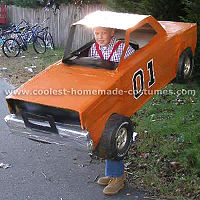User:The Duncan
Hi I'm Duncan Campbell, and I have been doing traffic engineering as a trade for the past fifteen years. My qualifications include Masters of Engineering degree with honours (civil)specialising in transport, and I am CPEng registered (Chartered Professional Engineer) and a member of IPENZ (Institute of Professional Engineers New Zealand). You can contact me on duncancampbellbythesea@gmail.com
Traffic engineering is a branch of civil engineering, and basically involves designing and putting in things like road markings, traffic islands, roundabouts, traffic signals, cycle lanes and bus lanes to name but a few. It's actually a really interesting occupation I find, but some of the drawbacks include:
- You have to really live in a decent sized city to do it. If you like living in a small town or rural you probably shouldn't be a traffic engineer.
- You have to deal with the public and politicians, which can be frustrating at times. As most drive cars themselves, many people think they know how to the job better than you. That's not to say you shouldn't listen to their suggestions, as often they can be right on the mark. If you're not a people person though, traffic engineering would perhaps not be your first career choice.
- There is a strong tendency towards conservative solutions rather than innovative ones, perhaps because traffic engineering is a field where creativity can sometimes involve a compromise of safety - Adoption of new ideas which have a perceived element of risk tend to be the exception rather than the rule.
- Its pretty hard to work as an independent entity and still get involved in interesting design projects.
For the past fifteen years I have mostly been tied down to large workplaces where flexibility of location and working hours are for the most part justifiably limited. The reality is that getting a new road design on the ground is a team effort requiring different skill sets and good communication to get a good result and avoid costly mistakes (which can also be publically embarrassing). I don't ever imagine getting away from that completely until my next lifetime in heaven (well, if they have roads up there), but I would like to think that there is a better way in the here and now. For example I think I am pretty good at designing roundabouts and I think my skills could be well utilised elsewhere and not necessarily within the same city or country I reside, or even within the same organisation I work for.
Myself and Ivan Jurisich at Traffic Engineering Solutions Ltd [1] in 2004/5 developed a new type of roundabout which we call the C-Roundabout of which we have recently built several in Waitakere City, Auckland, New Zealand where I worked as an employee of Waitakere City Council until November 2010. I would like to think there is more efficient way of sharing information about new ideas like these which can also encourage similar innovation take place. It has taken about five years from concept to construction for our C-Roundabouts, and I just don't have the patience to do it like that all over again for something else - it just seems to be so inefficient.
From 2009 - 2011 I have been involved in an NZTA research project which is expected to be published early 2012, entitled Improved Multi-lane Roundabout Designs for Urban Areas. This substantial project has taken over two years to complete, and specifically looks at several topics including a comparison of safety performance with traffic signals, catering for pedestrians, use of sightlines to influence driver behaviour and using speed tables at roundabouts. In 2011 I presented a few of the main findings at the IPENZ conference [2] [3] as well as the International Roundabout Conference in the United States [4] [5].
From 2006 - 2010 I was the main traffic engineer designer for the Minor Safety Programme in Waitakere City, Auckland. This was a rewarding experience and a few interesting jobs I think worth mentioning include 1/ Woodlands Park Roundabout [6]; 2/ Corbans Ave / Henderson Valley Road [7]; and even 3/ Rua Road Flush Median [8]; . Each of these jobs required a fair dose of engineering judgement rather than just relying on guidelines, and I think projects like these every now and then can be healthy to challenge ones fundamental assumptions. In addition, I developed some asphalt speed cushion profiles from some online Canadian specifications and installed them in Wattle, Waari, Castleford Streets and Solar Road [9] - these are an economic traffic calming treatment for bus routes on residential streets.








